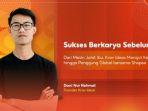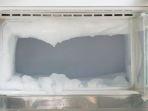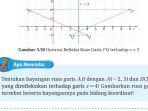SNPMB 2024
15 Simulasi Soal dan Kunci Jawaban UTBK SNBT 2024 Listerasi Bahasa Inggris, Simak Selengkapnya!
Tes Literasi mencakup literasi dalam Bahasa Indonesia dan Bahasa Inggris hingga Penalaran Matematika. Telah TribunBali.com rangkum dari berbagai sumb
Penulis: Mei Yuniken | Editor: Mei Yuniken
The question is based on the following text.
In the US, consumers spend around $700 million a year keeping their fabrics soft. In the UK people spend £200 million a year on fabric softener. A giant manufacturer even claims a massive 50 percent share of the market. Despite the popularity, fabric softeners can be harmful to both the people who use them and the marine life that ends up swimming in them.
Fabric softening surfactants can be derived from animals, plants or minerals, as in the case of newer, silicone-based formulations. There is little difference between the chemicals used in fabric softeners and those used in hair conditioners. Whatever they are based on, all fabric softeners work in pretty much the same way, by depositing these surfactants onto the fabric to make it feel softer, reduce static cling, and impart a fresh fragrance.
Special fixatives in the mix of both standard and luxury conditioners mean that the fragrance can last for days, permeating wardrobes and drawers. The regular off-gassing of perfume chemicals from fabric softeners can be a significant trigger for asthma and other breathing problems. In the US, chemically sensitive individuals complain that, even after several washes, they cannot get the smell of fabric softeners out of their washing machines and dryers.
If you are a fabric softener addict, there are now a number of companies that provide alternative and ‘green’ fabric softeners. However, essentially, these are unnecessary products that can trigger health problems and can interfere with the functional aspect of some textiles. For instance, when used on towels and nappies, some fabric softeners can reduce absorbency, which is why it’s generally recommended that reusable nappies aren’t washed with them. Once they are washed down the drain they can become highly toxic to aquatic life. Given this, maybe it’s worth asking yourself whether the time has come to break the fabric softener habit completely.
1). The word permeating in the third paragraph is similar in meaning with ….
a. filling
b. soaking
c. charging
d. attaining
e. absorbing
Jawaban: A
The question is based on the following text.
Earthquake is any sudden shaking of the ground caused by the passage of seismic waves through Earth’s rocks. Seismic waves are produced when some form of energy stored in Earth’s crust is suddenly released, usually when masses of rock straining against one another suddenly fracture and “slip.” Earthquakes occur most often along geologic faults, narrow zones where rock masses move in relation to one another. The major fault lines of the world are located at the fringes of the huge tectonic plates that make up Earth’s crust.
Little was understood about earthquakes until the emergence of seismology at the beginning of the 20th century. Seismology, which involves the scientific study of all aspects of earthquakes, has yielded answers to such long-standing questions as why and how earthquakes occur. About 50,000 earthquakes large enough to be noticed without the aid of instruments occur annually over the entire Earth. Of these, approximately 100 are of sufficient size to produce substantial damage if their centers are near areas of habitation. Very great earthquakes occur on average about once per year. Over the centuries they have been responsible for millions of deaths and an incalculable amount of damage to property.















Isi komentar sepenuhnya adalah tanggung jawab pengguna dan diatur dalam UU ITE.